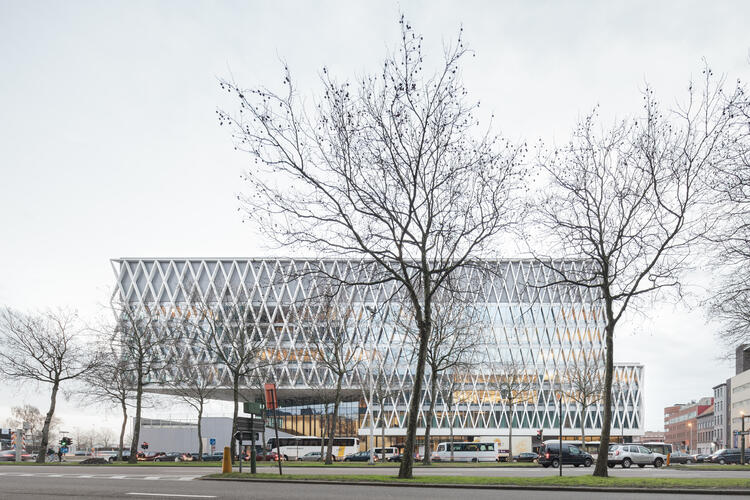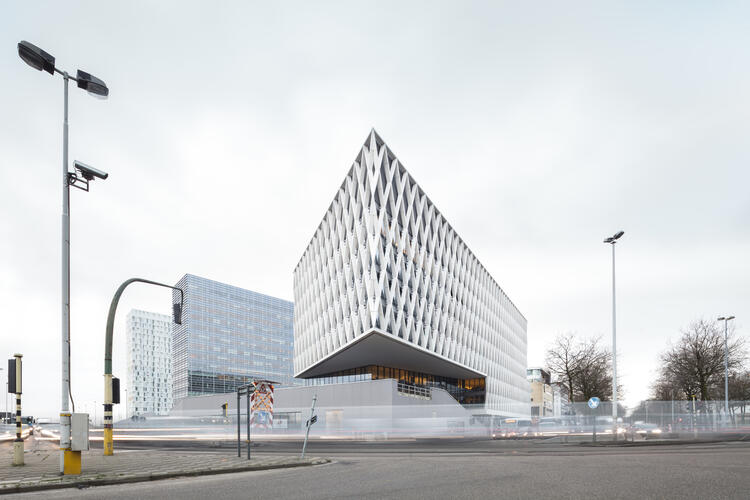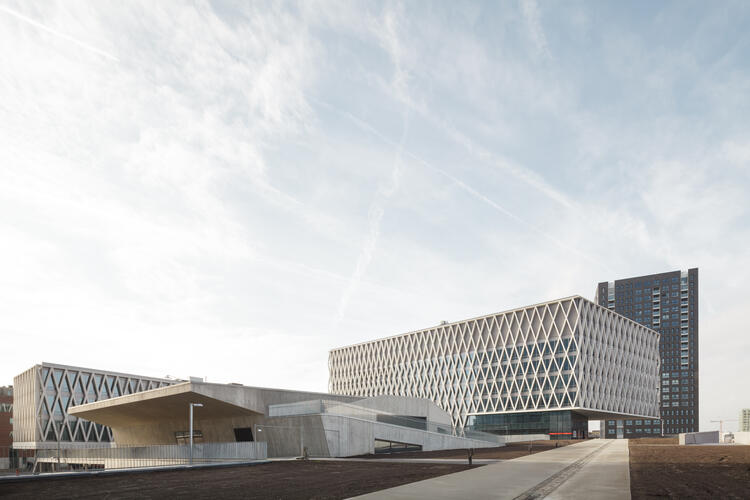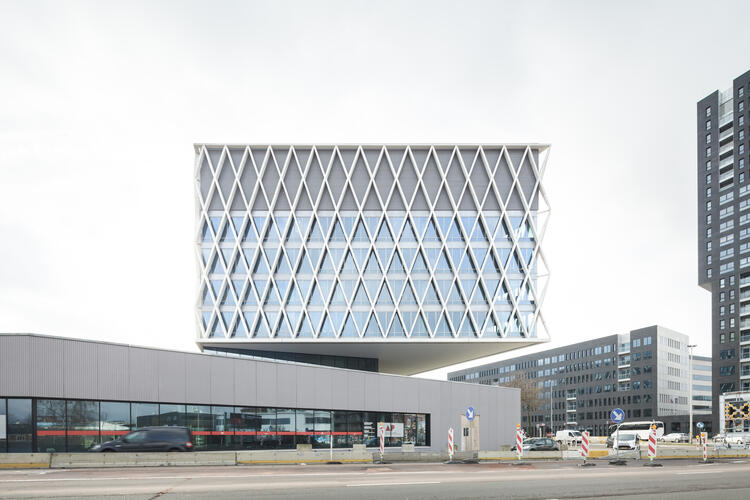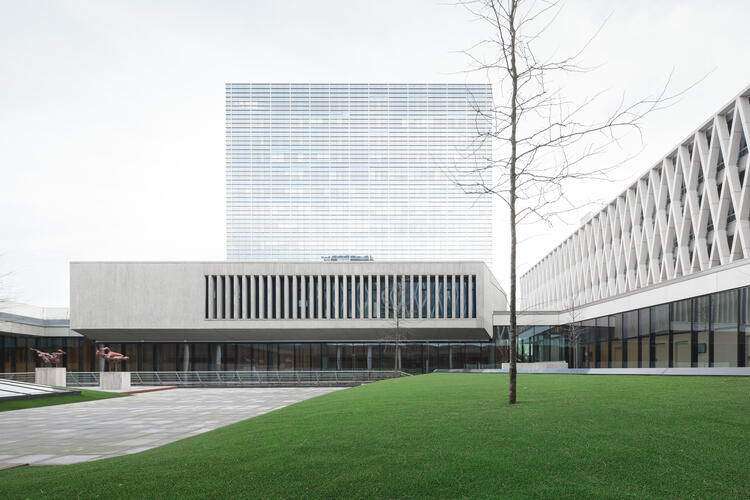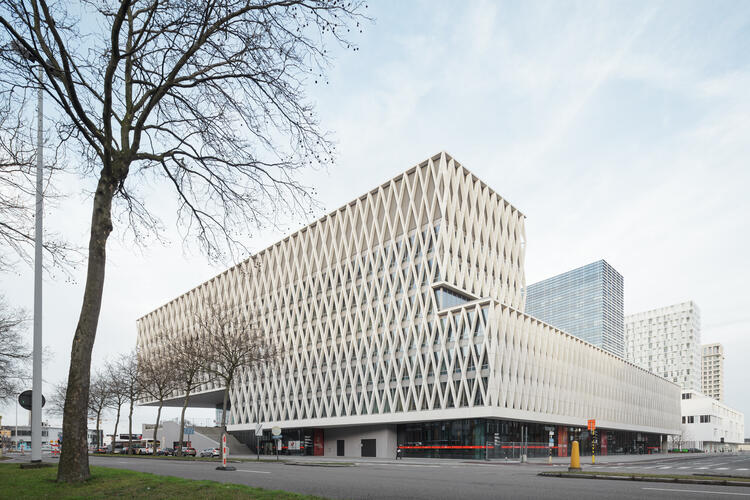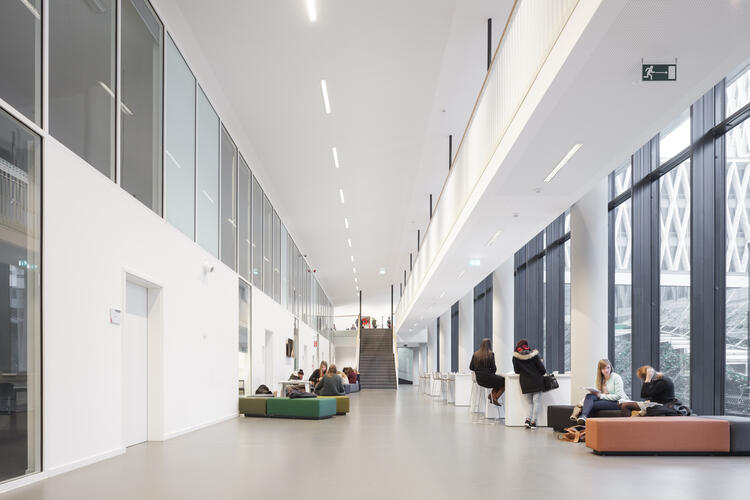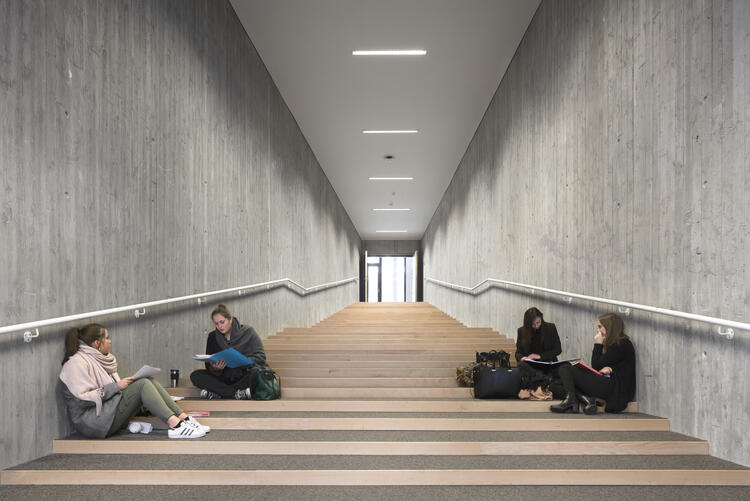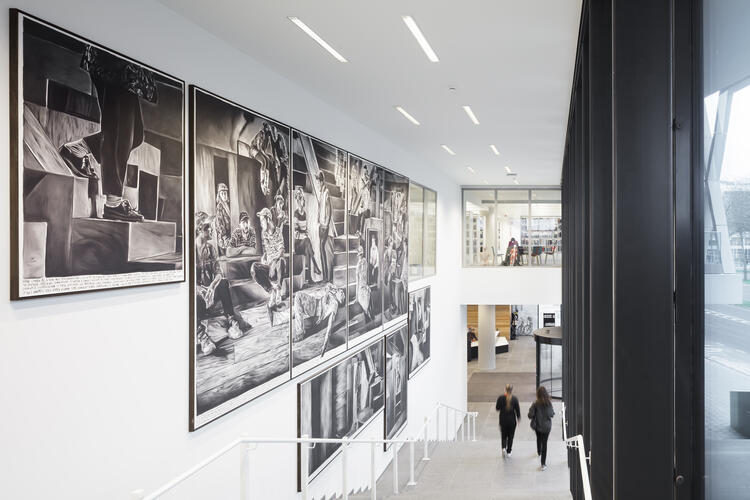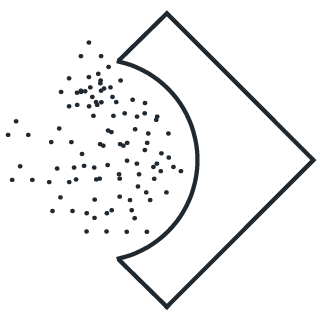AP University College
Noorderplaats
Antwerp
Belgium
- Jaspers-Eyers Architects
- Dirk Vandekerkhove Landschapsarchitecten
Toon Grobet
Sarah Blee
In the late 1990s, the city of Antwerp signed an agreement with the Belgian national railway company. The city was able to purchase an abandoned railyard covering 18 hectares for the symbolic sum of one euro and create a park on site. In exchange, the rail company was allowed to develop the remaining 6 hectares at the western tip. Italian city planners Bernardo Secchi and Paola Viganò drew the master plan. ‘Park Spoor Noord’ has since been completed. The elongated park cuts across the city and is considered one of the most successful urban renewal projects in Flanders in recent decades.
High-rise buildings are under construction at the head of the park. They contain offices, public facilities, apartments, and student housing. At the tip of this area, Artesis Plantijn University College has its new campus. The school building marks the start of the Leien boulevards, the busy roads crossing the city from north to south. Its counterpart to the south is the Law Courts with its butterfly roofs by architect Richard Rogers.
The exceptional location requires an exceptional, even iconic building. The Antwerp city architect, Kristiaan Borret, was able to persuade Artesis Plantijn University College to cancel its plans to use the less than satisfying results of a previous design contest and issue a new one. This time, the contest had a less stringent list of requirements and a more ambitious project definition. POLO won the contest.
compact city campus
The first gesture involves limiting the height of the building and viewing the school as a ‘compact city campus’ nestled in the urban fabric. The building was designed not to be just another tower among many, but to align with the existing buildings along the Leien. The loss of surface area is compensated by an additional ‘underground’ level and the cantilevered volume along the Leien.
The compact city campus is both landscape and city. Like a real campus, the university college is open and accessible. The central, green patio can be seen from the street. This patio is the heart of the campus. A glass hallway – like a cloister gallery around a courtyard garden – offers access to the common areas, like the reception, the library and the auditoriums. Part of the patio has been lowered below ground level, ensuring that the extra ‘underground’ level receives sufficient natural daylight.
park ramp
The second design gesture is the integration of the ‘park ramp’ – a public walking and cycle path – over, along and through the building. The school is both building and infrastructure. The park ramp brings the green park into the school. The ramp connects to a bridge for pedestrians and cyclists, based on a design by Laurent Ney. The bridge connects Park Spoor Noord to the Eilandje on the other side of the Leien. Unlike the patio, the park ramp is open to the public. It forms an elevated balcony from which passers-by can view both the quiet, private patio and the busy traffic. The lack of any direct connection between patio and park ramp creates a field of tension between public and private, between seeing and being seen, between distance and attraction.
flight of stairs
The third design gesture is the monumental flight of stairs under the cantilevered volume. The covered, public outdoor flight of stairs not only gives the school a recognizable entrance, it is – like the park ramp – a generous gesture. The private school building gives public space to the city and its inhabitants. The building takes up room, but it also gives something back.
The flight of stairs is the high point of the project. This is where all the gestures converge. It is a busy location where the Leien, the cycle bridge, the park ramp and the school meet. It turns the building into a gateway to the city and to the park.
"The design aims to realize the idea of an "open" campus within a limited building block. This design resolutely opts for a central green patio from which the common main functions are accessed through a glass walkabout. Due to its strong architectural expression and bold volume, the building acts like a proud new ‘character’ in the city.
We regard the building as a gift from the city and a gift to the city."

